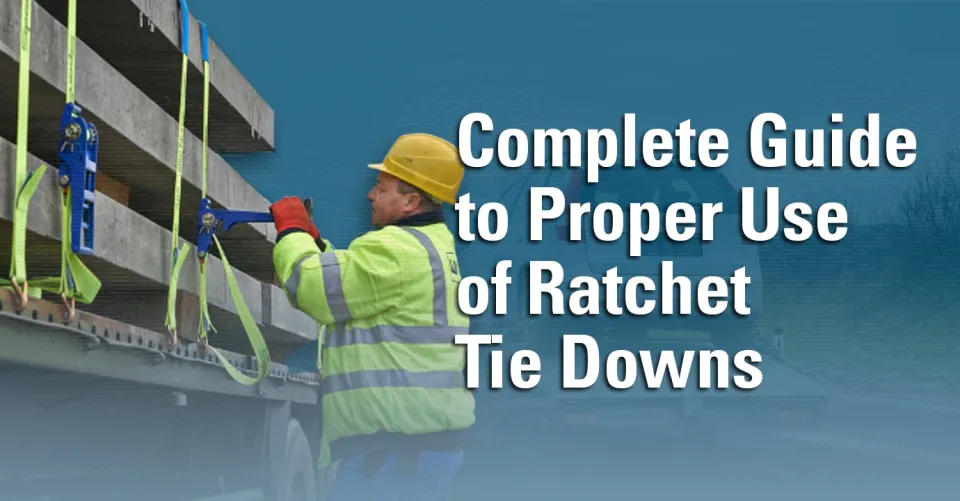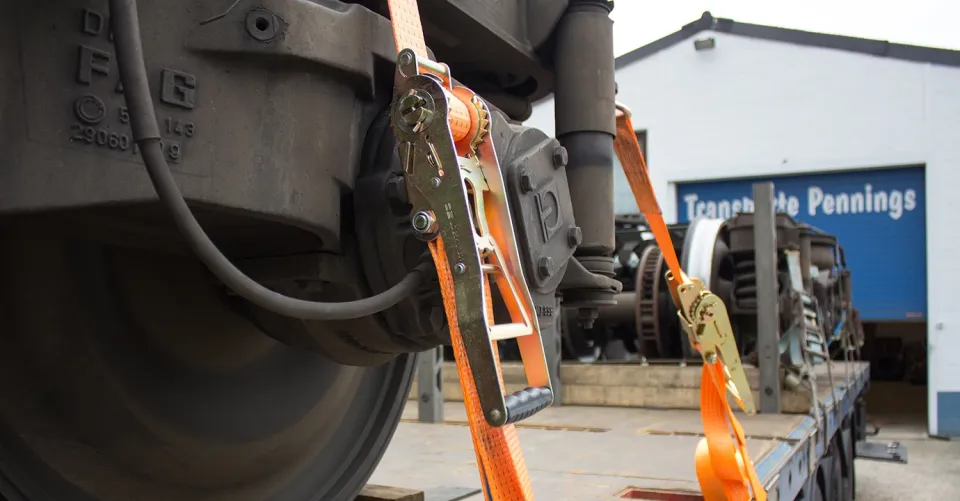
Comprehensive Guide to Proper Ratchet Tie Down Usage
In the world of cargo transport, ensuring loads stay secure and stable during transit is a top priority. Using the correct ratchet tie down, or cargo securing strap, can prevent significant losses from items coming loose or getting damaged. For those who frequently use this tool, understanding the right way to use a ratchet tie down is essential to ensure safety.
This article will guide you through using ratchet tie downs effectively, keeping your transported items safely in place throughout the journey.

What is a Ratchet Tie Down and Why is it Important?
A ratchet tie down is a cargo-securing tool made from strong webbing with a ratchet mechanism that makes it easy to tighten and release. This strap is widely used in cargo shipping, both for heavy and light loads, thanks to its high tensile strength and weather resistance.
Using a ratchet tie down correctly is crucial to keep cargo secure and reduce road accident risks. Improper usage can lead to loosened or fallen items, which poses a risk not only to you but also to other road users.
Guide to Using a Ratchet Tie Down
To achieve optimal results, here are some essential steps to effectively use a ratchet tie down:
1. Choose the Right Ratchet Tie Down for the Load
The first step is selecting a ratchet tie down with the right strength and length for the load you’ll be transporting. Ratchet tie downs come in various sizes, strengths, and types. Make sure you’re using a strap with enough weight capacity to hold the load securely without risk of breaking. Be sure to check the product specifications to confirm the load-binding capacity.
2. Position the Strap Correctly
Once you've selected the appropriate ratchet tie down, ensure the strap is positioned securely and stably. Attach the strap’s end hooks to the vehicle’s anchor points or a sturdy point on the cargo.
Make sure the strap is not slanted or twisted, so you achieve stable tightening. Watch for sharp or rough areas that could damage the strap and reduce its durability. Use suitable protective gear if necessary.
Also see: It Turns Out This Is How To Use Ratchet Lashing Correctly! | Ngedeprok Eps 1
3. Tighten the Strap Using the Ratchet Mechanism
After positioning the strap, use the ratchet mechanism to tighten it fully. Hold the ratchet and pull the lever until the strap feels tight enough. Avoid over-tightening, as this can damage the load or the strap itself. Adjust the tension as needed to ensure the load doesn’t move while the vehicle is in motion.
4. Ensure No Loose Ends are Hanging
Excess strap length should be secured so that no part is hanging, especially during transit. If the strap is too long, coil the excess portion and secure it in a safe spot. Loose straps can get caught on the wheels or other parts of the vehicle, which can be hazardous during the journey.
5. Double-Check Before Departure
Before starting your trip, always re-check the ratchet tie down's tension to ensure the load is secure. Confirm all anchor points are securely attached, and there are no loose areas.
This inspection is crucial to keep the load safe during transit, especially if you are traveling long distances or through challenging terrain.
Why Choose SpanSet Tie Down Products and Services?
As a company focused on load security, we understand the importance of safety in transporting goods. SpanSet offers a wide range of high-quality tie downs, including lifting belts, round slings, webbing slings, and height safety equipment (PSEAF).
In addition to top-quality products, we also provide professional consultation, tool usage training, quality testing, and repair services.
With our quality products and services, you can rest assured that your items will be secure during transportation. Contact SpanSet today and ensure a safe journey for your cargo!
For further consultation about SpanSet Indonesia products and services, please contact us via email at [email protected] or WhatsApp
To find specification detail and prices of SpanSet Indonesia Products, please visit SpanSet Indonesia Marketplace on Tokopedia and Shopee.